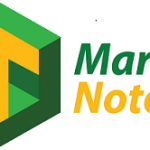Better on the Edge?
Technology trends are constantly and quickly evolving, and part of that evolution is certain technologies catching up to, or leapfrogging others. Such may be the case with Cloud Computing, with large developments already in place, such as Amazon Web Services (AWS), Microsoft Azure and Google Cloud Platform. The technology continues to grow, and is dominant at this time, but many businesses are becoming concerned with certain cloud computing shortcomings, like the latency in getting data to a data centre. Latency is caused by the time it takes for data to make the relatively long journey to the cloud and back from the cloud to where it is needed for processing. The cloud provides lots of affordable, well managed storage space and processing of non-time sensitive data. But some businesses require fast processing of time sensitive data in order to reduce decision making time in their systems, helping the business to maximize gains and minimize losses. Time is often critical in getting it right.
Edge computing relies on specialized devices located near the “edge” of the network, and these devices are designed to get the specific data they need very quickly, make a data processing decision, and deliver an immediate result. These devices may look like a PC, but their work is narrowly defined for a unique set of tasks. This quick processing by Edge computers can be a game saver in situations where speed is required, and Cloud Computing cannot match this speed. Edge computing can also be used very successfully in remote locations, where connectivity to large data centres is not feasible or is on a part time basis.
The Internet of Things (IoT) can especially benefit from Edge computing in ways that Cloud Computing cannot replicate, for instance, an IoT device may be reaching a Fail Point, and the device must be shut down immediately in order to prevent damage. An Edge device can make the shut down happen very quickly and prevent expensive damage to the IoT device. Meanwhile, the processing of IoT data and the high level management of the IoT device can continue on a cloud platform using data sent to the cloud before the shut down. Using Edge and Cloud computing together in this way can allow a business to get the best of both worlds. Cloud and Edge computing solutions are compatible, as they do not compete for the same job – each is good at what it does, and each will continue to grow.
The goal of TREND DISRUPTORS is to discover and monitor technical developments that have the potential to DISRUPT a market sector. We look for the best ideas, and generate actionable investment recommendations for subscribers. As a general rule, these recommendations are speculative, and we advise caution, discretion, and thorough research. We strive to identify investment opportunities that can lead to success for the well-informed investor.
Stay tuned!

